
The New York Times is an American daily newspaper based in New York City with a worldwide readership. It was founded in 1851 by Henry Jarvis Raymond and George Jones, and was initially published by Raymond, Jones & Company. The Times has won 132 Pulitzer Prizes, the most of any newspaper, and has long been regarded as a national "newspaper of record". It is ranked 18th in the world by circulation and 3rd in the U.S.
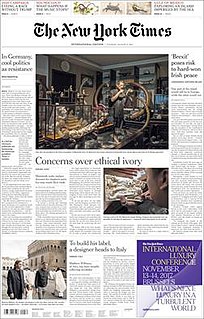
The New York Times International Edition is an English-language daily newspaper distributed internationally by The New York Times Company. It has been published in two separate periods, one from 1943 to 1967 and one from 2013 to the present.

The New York Herald Tribune was a newspaper published between 1924 and 1966. It was created in 1924 when Ogden Mills Reid of the New-York Tribune acquired the New York Herald. It was regarded as a "writer's newspaper" and competed with The New York Times in the daily morning market. The paper won twelve Pulitzer Prizes during its lifetime.
Abraham Michael Rosenthal was an American journalist who served as The New York Times executive editor from 1977 to 1988. Previously he was the newspaper's city editor and managing editor. Near the end of his tenure as executive editor, he became a columnist (1987–1999). Later, he had a column for the New York Daily News (1999–2004).
New Journalism is a style of news writing and journalism, developed in the 1960s and 1970s, that uses literary techniques unconventional at the time. It is characterized by a subjective perspective, a literary style reminiscent of long-form non-fiction. Using extensive imagery, reporters interpolate subjective language within facts whilst immersing themselves in the stories as they reported and wrote them. In traditional journalism, however, the journalist is "invisible"; facts are reported objectively.
Howell Hiram Raines is an American journalist, editor, and writer. He was executive editor of The New York Times from 2001 until he left in 2003 in the wake of the scandal related to reporting by Jayson Blair. In 2008, Raines became a contributing editor for Condé Nast Portfolio, writing the magazine's media column. After beginning his journalism career working for Southern newspapers, he joined The Times in 1978, as a national correspondent based in Atlanta. His positions included political correspondent and bureau chief in Atlanta and Washington, DC, before joining the New York City staff in 1993.
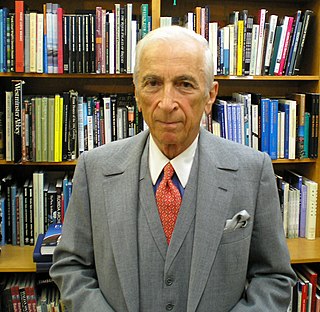
Gaetano "Gay" Talese is an American writer. As a journalist for The New York Times and Esquire magazine during the 1960s, Talese helped to define contemporary literary journalism and is considered, along with Tom Wolfe, Joan Didion and Hunter S. Thompson, one of the pioneers of New Journalism. Talese's most famous articles are about Joe DiMaggio and Frank Sinatra.

James Barrett Reston, nicknamed "Scotty", was an American journalist whose career spanned the mid-1930s to the early 1990s. He was associated for many years with The New York Times.

Arthur Hays Sulzberger was the publisher of The New York Times from 1935 to 1961. During that time, daily circulation rose from 465,000 to 713,000 and Sunday circulation from 745,000 to 1.4 million; the staff more than doubled, reaching 5,200; advertising linage grew from 19 million to 62 million column inches per year; and gross income increased almost sevenfold, reaching 117 million dollars.

Arthur Ochs “Pinch”Sulzberger Jr. is an American journalist.
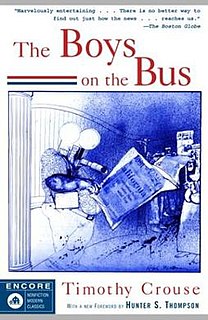
The Boys on the Bus (1973) is author Timothy Crouse's seminal non-fiction book detailing life on the road for reporters covering the 1972 United States presidential election.
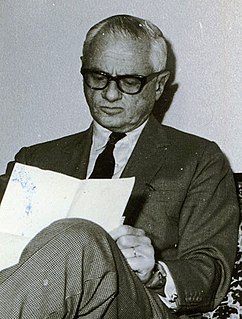
Cyrus Leo Sulzberger II was an American journalist, diarist, and non-fiction writer. He was a member of the family that owned The New York Times and he was that newspaper's lead foreign correspondent during the 1940s and 1950s.
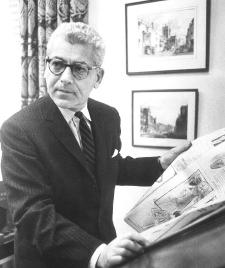
John Bertram Oakes was an iconoclastic and influential U.S. journalist known for his early commitment to the environment, civil rights, and opposition to the Vietnam War.

"Frank Sinatra Has a Cold" is a profile of Frank Sinatra written by Gay Talese for the April 1966 issue of Esquire. The article is one of the most famous pieces of magazine journalism ever written and is often considered not only the greatest profile of Frank Sinatra but one of the greatest celebrity profiles ever written. The profile is one of the seminal works of New Journalism and is still widely read, discussed and studied. In the 70th anniversary issue of Esquire in October 2003, the editors declared the piece the "Best Story Esquire Ever Published". Vanity Fair called it "the greatest literary-nonfiction story of the 20th century".
Times Books is a publishing imprint owned by The New York Times Company and licensed to Henry Holt and Company.
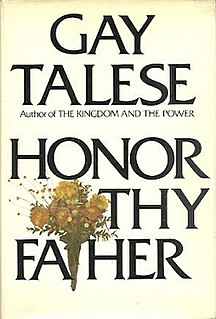
Honor Thy Father is a 1971 book by Gay Talese, about the travails of the Bonanno crime family in the 1960s, especially Salvatore Bonanno and his father Joseph "Joe Bananas" Bonanno.

Buried by the Times is a 2005 book by Laurel Leff.

Arthur Gregg Sulzberger is an American journalist serving as chairman of The New York Times Company and publisher of its flagship newspaper, The New York Times.
Ivan Bertram Veit was the executive vice president of The New York Times.














